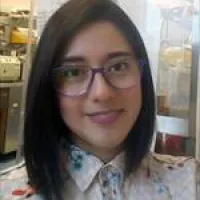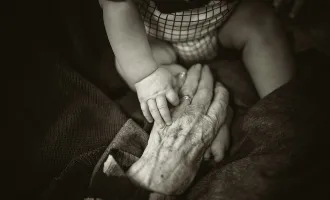UCSF Oral Medicine Clinic: HIV/AIDS Pioneers
In June of 1981, San Francisco saw the first cases of what eventually became known as HIV/AIDS. They were atypical cases of pneumonia and purple tumors −consequences of secondary infections due to immunosuppression− in gay males.
It’s been 40 years since then, and from those early days until now, the UCSF Oral Medicine Clinic has been a pioneer in diagnosis and treatment of oral manifestations associated with the syndrome.
The early days
Most of the early cases were diagnosed and treated in public institutions by professionals such as Dr. John S. Greenspan and Dr. Deborah Greenspan, members of the Department of Orofacial Sciences (formerly called Department of Stomatology) and the School of Dentistry at UCSF. Both recognized that HIV/AIDS patients experienced one or more oral lesions at some time during their disease.
John and Deborah Greenspan, and their UCSF Team, described hairy leukoplakia for the first time — a white patch with a ridged appearance on the side of the tongue associated with Epstein-Barr virus co-infection —, they devised new ways of treating mouth problems and charted changes in the disease epidemic in San Francisco.
The relevance and legacy that Drs. Greenspan gave to HIV/AIDS was established through their work teaching nurses and physicians how to carry on an oral mucosal screening, and with the knowledge transmitted through their publications and directly to their trainees, who have kept giving remarkable contributions to the field.
Creating the model
One of those former trainees is Dr. Caroline Shiboski, current Professor and Chair of the Department of Orofacial Sciences. She met Dr. Deborah Greenspan prior to starting the Advanced Education in General Dentistry program at UCSF, and became acquainted with the Oral Medicine Clinic as part of a regular rotation during her 2-year program.
Subsequently, Dr Shiboski, following Dr John Greenspan’s advice, applied and was granted a Dentist Scientist Award (K15) from the National Institute of Dental and Craniofacial Research (NIDCR), enabling her to earn a PhD in Epidemiology (from UC Berkeley in 1997), and a certificate in Post Graduate Oral Medicine at UCSF (in 1998). Shiboski recalls her experience in Dr. Deborah Greenspan’s clinic, where at that time the majority of patients were infected with HIV, and how Greenspan demystified the disease and strove to eliminate the stigma that these patients would often encounter when seeking dental care in the community.
"All her students became very comfortable treating HIV-positive patients, and she made us understand that as long as dentists use universal infection control precautions, dental /oral care is safe to deliver for both providers and patients" recalls Shiboski.
Collaboration with several HIV cohorts in San Francisco, as part of which physician and/or nurse examiners would evaluate patients’ mouth as part of regular physical examinations in these populations, was another pioneering effort by John and Deborah Greenspan. These efforts were funded by NIDCR for 20+ years, as the Oral AIDS Center program project. Shiboski, as part of her PhD thesis and supported by her Dentist Scientist award, had the opportunity to analyze extensive data pertaining to oral lesions and HIV-related variables collected from these cohorts. For example, she demonstrated that populations such as heterosexual women injection drug users showed a strong positive association between the level of immunosuppression (progression caused by the disease) and the presence of oral lesions. These investigations also clarified the role gender played and highlighted other avenues of transmission in the HIV infection and occurrence of oral conditions.
Good mentorship was key in Shiboski’s career: " John and Deborah Greenspan were always very generous at introducing me to investigators in the field, and providing opportunities for me to grow professionally and scientifically. They recognized the importance of epidemiology in learning about the natural history of HIV disease and associated oral conditions, and valued my contributions" said Dr. Shiboski.
Replicating the San Francisco model of studying HIV-related oral disease in HIV cohorts
After joining the Greenspan team at UCSF and after completing her PhD in Epidemiology and her Oral Medicine training, Shiboski implemented a new collaborative study in Zimbabwe, in collaboration with Prof Midion Chidzonga, an oral and maxillofacial surgeon then Chair of the new Department of Dentistry at the University of Zimbabwe in Harare, and with funding from the AIDS Fogarty Program lead by Art Reingold at UC Berkeley. The research focused on assessing the diagnostic performance of oral lesions diagnosed by trained nurses as compared to Prof Chidzonga’s diagnoses as reference standard. The study also explored oral candidiasis as a surrogate marker of HIV progression among women in Zimbabwe.
In 2006, Shiboski, and colleagues from the University of North Carolina at Chapel Hill and Case Western University, received funding from NIDCR to establish the Oral HIV/AIDS Research Alliance (OHARA) Collaborative Science Group to provide the capacity to investigate the oral complications associated with HIV/AIDS within the AIDS Clinical Trial Group (ACTG) infrastructure. Its goals were to explore the effects of potent anti-retroviral therapy (ART) on the development of oral opportunistic infections in the context of immune suppression and long-term ART.
The ACTG, the largest AIDS clinical trial network in the world, runs trials in clinical sites in the United States, including a site at UCSF, and low-income countries among adult HIV-infected patients.
OHARA, continuing the legacy pioneered through the Oral AIDS Center in San Francisco, also trained nurses and physicians to diagnose oral mucosal diseases, and confirmed the usefulness of training non-oral health specialists in the diagnosis of common oral lesions, in particular in limited-resource settings.
OHARA implemented a total of nine protocols from 2006 to 2013. Three protocols involved domestic research sites, while three involve international research sites (in Africa, India, and South-America), and the remaining three involve both domestic and international sites. The topics of these protocols fit within the highest priority areas of the OHARA/ACTG and included oral candidiasis, human papilloma virus (HPV) and some of the virally mediated diseases, Kaposi sarcoma (KS) and KS human virus (KSHV).
Modern day Oral Medicine service
Currently, HIV/AIDS is no longer a deadly disease. Instead, preventive education, early diagnosis, proper treatment, and a close follow-up have transformed HIV/AIDS into a chronic condition.
"The field has changed so much; 30 years ago, 90% of patients seen in Deborah Greenspan’s Oral Medicine clinic were HIV-positive, while currently I see about one HIV-positive patient every three months. This is due to the spectacular success of antiretroviral drugs, which control opportunistic infections, and that explain why we see very few HIV-positive patients with oral diseases in the US in 2022," said Dr. Shiboski.
So, how is the Oral Medicine service today?
"The best way for students to understand the relevance of the service is to see the patients in the Oral Medicine Clinic and familiarize themselves with the diseases we manage," said Dr. Alessandro Villa, current Chief of the Oral Medicine Service at UCSF.
Inspired by both his father and a professor in dental school, Dr. Villa pursued the Oral Medicine residency and graduated from Harvard University. He is proud of the contributions and the history of the clinic. So, he pointed out the relevance Oral Medicine has for HIV/AIDS patients.
"They [Oral Medicine providers] have an important role in the care of HIV patients, but also might play a role in reducing the infections by early diagnosis," Dr. Villa said.
It is still a challenge for Oral Medicine specialists to holistically integrate oral health in HIV/AIDS in general health care.
"The oral health assessment in HIV seropositive patients is critical because they are at high risk of developing caries, dry mouth, and other conditions that affect the oral cavity," Dr. Villa said.
Perspectives and the future
“Nowadays, the entirely new field of studies surrounding HIV patients is aging.” Dr. Shiboski said.
"HIV in a way is no longer considered a deadly disease because the virus is overall well controlled by combination ART, but its morbidity is due to a number of metabolic conditions associated with cART," Dr. Shiboski explained.
Because of their medication, HIV patients might develop diabetes, alteration in fat distribution, and vitamin D deficiency. Also, they may be exposed to substances such as tobacco and alcohol or unprotected risky sexual behaviors, which predispose them to develop oral cancer and syphilis.
"The best way to do this [oral care] is that dental providers participate in screening programs that share site patients with systemic conditions such as HIV," Dr. Villa said.
Providing an accurate oral health service that educates patients regarding dental care and communities regarding the stigma around the diagnosis is still a goal to achieve and part of his everyday tasks in the Oral Medicine service.
The multidisciplinary fashion in which UCSF/AIDS cases are approached in UCSF HIV/AIDS Program and Oral Medicine service is a great learning opportunity for dental professionals interested in the field.
One of those professionals is Dr. Anette Vistoso, a graduate of the University of Chile. During her dental training, she realized the relevance of awareness, prevention, and orofacial pain management for chronic patients diagnosed with HIV/AIDS.
"As a first-year resident of the UCSF Oral Medicine Program, I have had the opportunity to treat patients with chronic diseases, HIV/AIDS persons under combination antiretroviral therapy now can be considered like that," Dr. Vistoso said.
After all these years, the Oral Medicine service continues to be a top place for research and learning about HIV/AIDS.
"UCSF owns a database of millions of patients, now through machine learning and artificial intelligence, we can create profiles for clinical and diagnosis purposes," said Dr. Vistoso.
Furthermore, she sees an opportunity for contributing to preventive education.
"We can use this information in algorithms for educational tools for trainees, which increase their formative potential identifying clinical patterns in HIV/AIDS patients," she said. "Meanwhile, patients could learn about their disease and how to prevent potential oral lesions."



